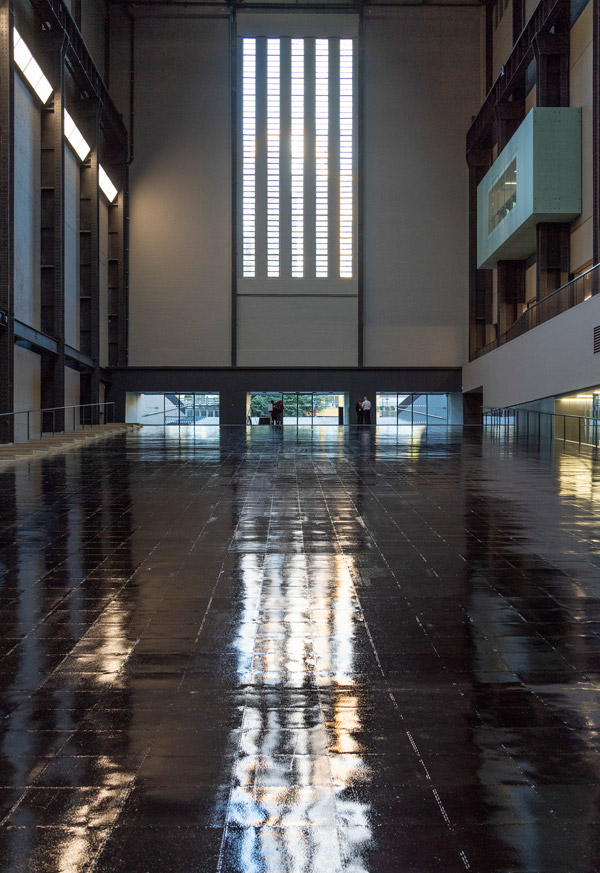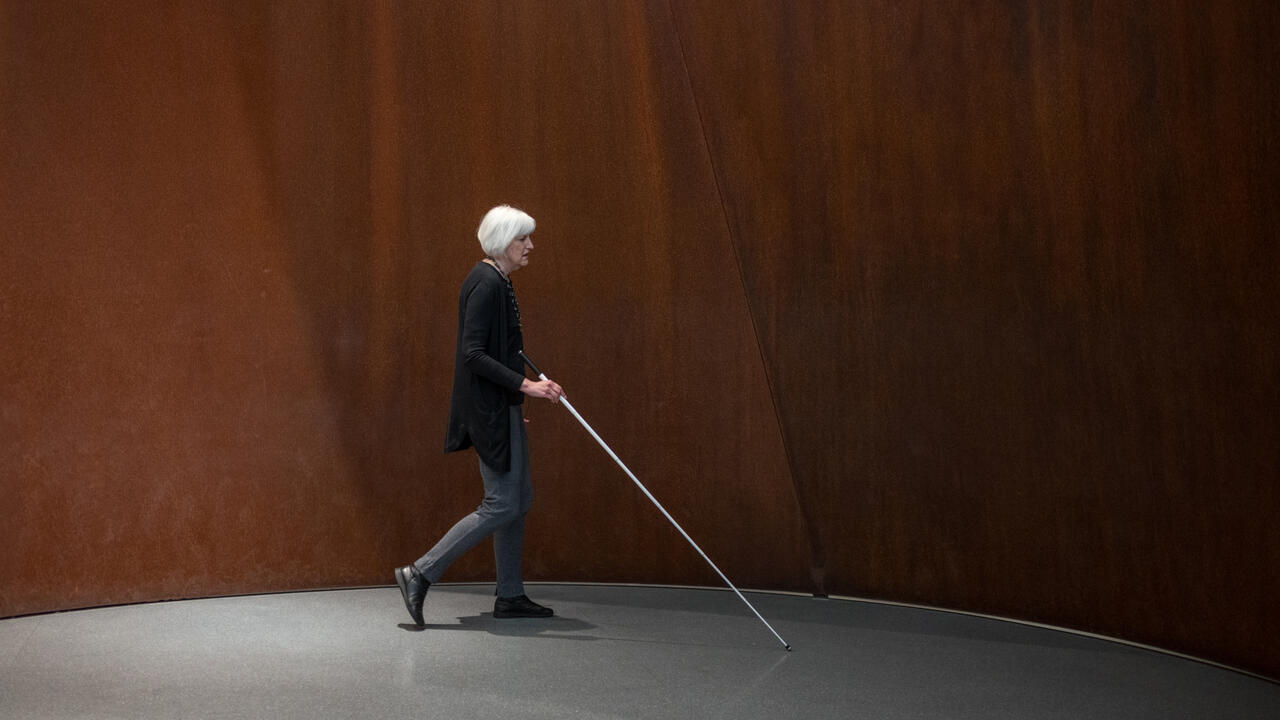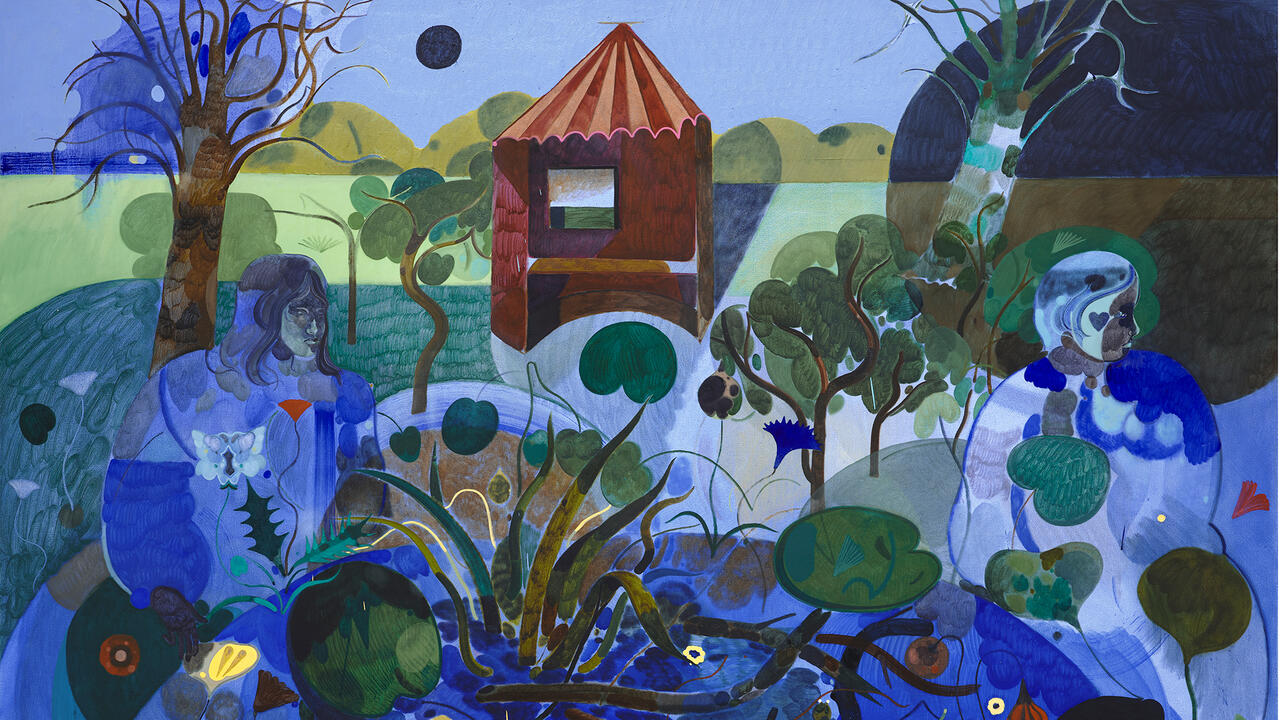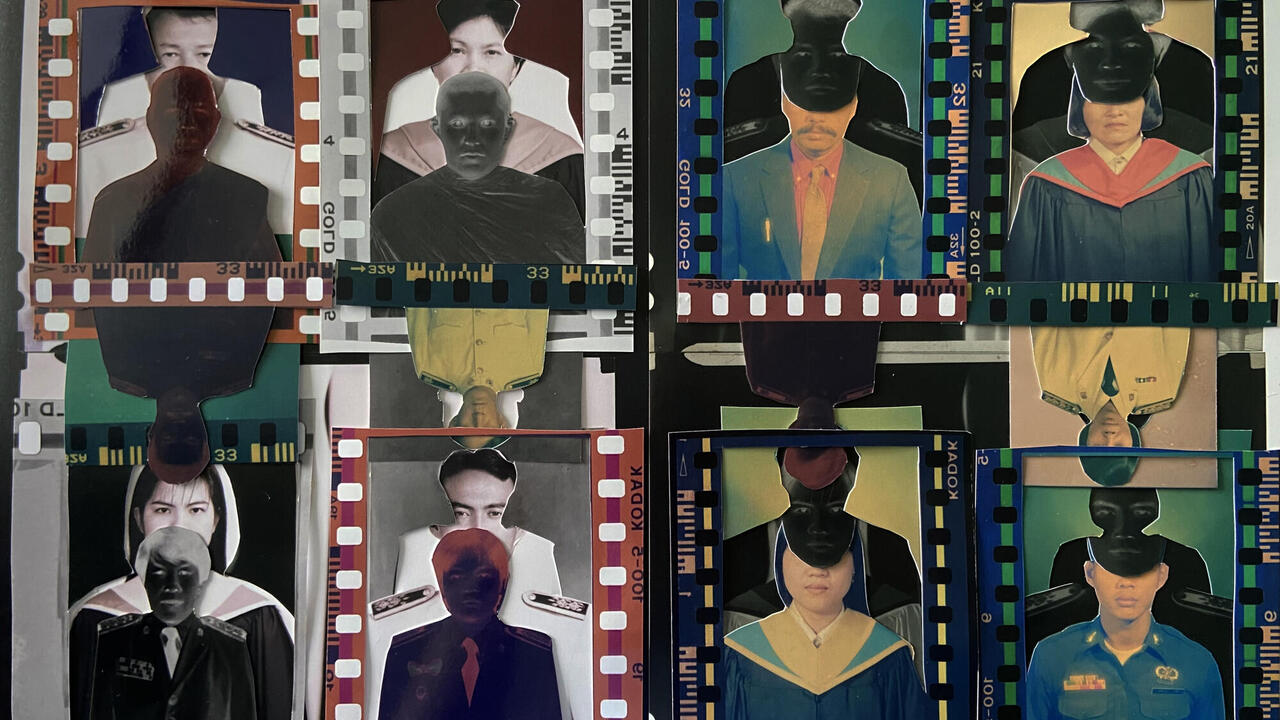Migration and Neighbourliness at Tania Bruguera’s Turbine Hall Commission
At Tate Modern, the artist has installed heat-sensitive paint, tear-inducing gas and renamed the Tate extension in honour of a local activist
At Tate Modern, the artist has installed heat-sensitive paint, tear-inducing gas and renamed the Tate extension in honour of a local activist

With a scattering of works throughout Tate Modern’s Turbine Hall, Tania Bruguera’s 2018 Hyundai Commission swings through a range of forms and feelings. First there’s the sobering realism of the title, 10,142,926, which denotes the number of people who migrated from one country to another last year added to the number of migrant deaths recorded this year, and which is stamped in red ink on visitors’ hands. The number – and by extension the title – is likely to grow within days. Then there’s the room filled with a tear-inducing gas, which smells like vaporized menthol crystals, where people can experience what Bruguera calls ‘forced empathy’. Across these and several other works, the project puts visitors’ bodies and emotions through unusual and uncomfortable states in a bid to stir ideas around migration, neighbourliness and civic empowerment.

In what feels more like an exhibition than a single commission, the project also involves longer-term work with people who share Tate’s postcode, who were invited via an open call to work with Bruguera. By the admission of Tate Modern’s director Frances Morris, the museum’s engagement with its local audience hasn’t been what it could, or should, be: ‘we want to be a local museum but we don’t know what that means.’ Bruguera’s commission is an opportunity to find out. Over the past four months, 21 Tate Neighbours who live or work near the museum have met weekly with Bruguera to discuss the museum and its relationship with its local community and to shape her commission, including by writing a manifesto for their activities that appears on visitors’ devices when they access Tate’s Wi-Fi. Their most impressive intervention is a symbolic one: they have renamed Tate’s Boiler House in honour of Natalie Bell, a local resident and activist chosen for her work with various charities offering housing, social support and activities for local residents – quite a contrast to the Russian billionaire Leonard Blavatnik, the honorand of Tate Modern’s other wing. For the coming year, Natalie Bell House will be keyed into all maps, signage and publicity for Tate Modern. During this time, Bruguera will act as the lead artist for Tate Exchange, the museum’s dedicated events and activities space, working with Tate Neighbours and wider audiences under the theme of ‘movement’.

At first glance the Turbine Hall appears unchanged other than the glossy black floor tiles covering the usual polished concrete ramp, but beyond the bridge a matte black rectangle of heat sensitive paint conceals a portrait of a young man named Yousef. A Syrian migrant from Homs, Yousef received support from SE1 United, a charity Bell helps to run, and he is now studying medicine and working for the NHS. To reveal the full ‘horizontal mural’ that features his portrait will require the concerted effort of hundreds of people lying side by side on the floor and then getting up to observe the result of their collective body heat. In the meantime, people can lie down to warm the paint, leaving behind body imprints, which evoke Yves Klein’s series of 1960s ‘Anthropométries’ for which the artist used women’s bodies as paintbrushes. But despite the ludic potential of its interactive floor, the commission as a whole is freighted with serious associations, particularly in a country whose neighbourly relations are deteriorating by the day, and which is blighted by more than a decade under the government’s hostile environment policy, designed to make immigrants’ lives as difficult as possible.

Migration and power are recurring themes in Bruguera’s work. Her 2008 action Tatlin’s Whisper #5 involved two Metropolitan Police mounted officers deploying crowd control techniques on unsuspecting Tate Modern visitors and from 2010–15 her Immigrant Movement International explored the meaning of being an immigrant and the possibility of being a world citizen. More recently, her Asociación de Arte Útil (Useful Art Association) has been at the forefront of debates around the usefulness of art in contemporary society, calling for art that responds directly to political, social and economic situations to provide practical and beneficial outcomes. With 10,142,926 Bruguera articulates these themes in the language of intangibility, through the play between invisibility, camouflage and overtness. Her will to shake up and reform the institution seems to be expressed by the ultra-low frequency emitted by a stack of 30 subwoofers, installed in five columns to match the Turbine Hall’s windows, which plays sound designed by Steve Goodman, also known as Kode9, of Hyperdub records. As the speakers rumble they also subtly move everything and everyone around them.

Reflecting on the range of works on show, Bruguera credited Tate as co-authors of the project, adding that ‘many of these are things I tried in other places and didn’t get’. But the most transformative partners may be the Tate Neighbours. At the launch, an elderly woman named Barbara spoke on behalf of the group saying they ‘consider migration in a symbolic way, as the movement of the mind and heart from a divisive way of being to a new inclusivity. We are attempting to address the dualistic mindset of either/or; of right/wrong; hoping to be like yeast in the world, to continue to expand and have our effect like a ripple.’ Bruguera quipped: ‘This should be called the commission of Tania Bruguera and Tate Neighbours. Maybe we have to rectify that!’
Tania Bruguera, 10,142,926, runs at Tate Modern until 24 February 2019
Main image: Tania Bruguera, 10,142,926, 2018, installation view, Turbine Hall, Tate Modern, London. Hyundai Turbine Hall commission. Courtesy: Tate



















